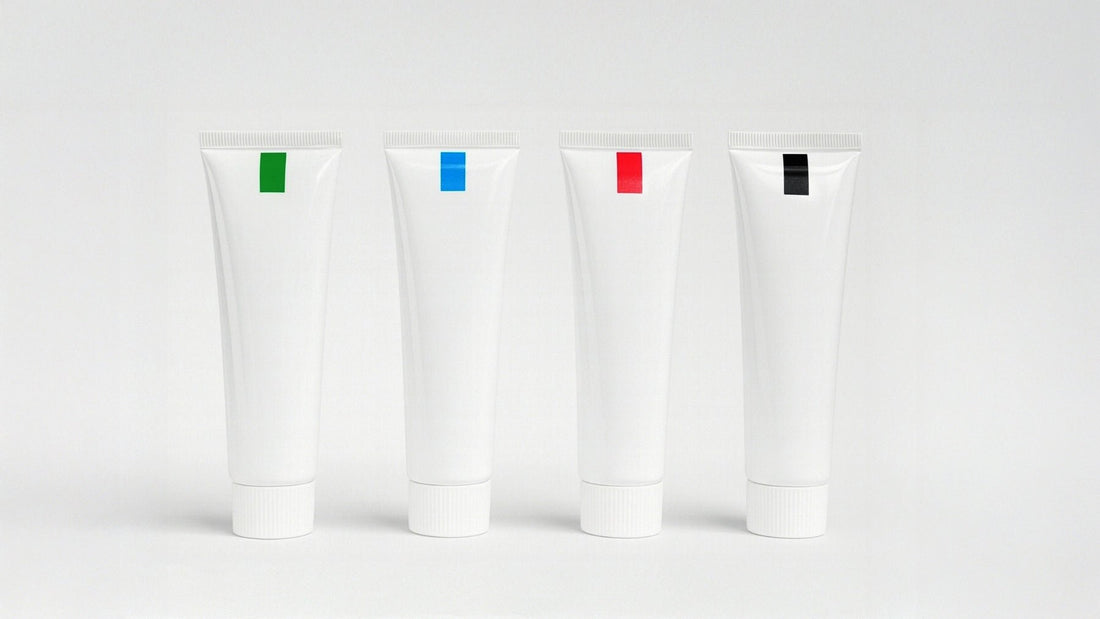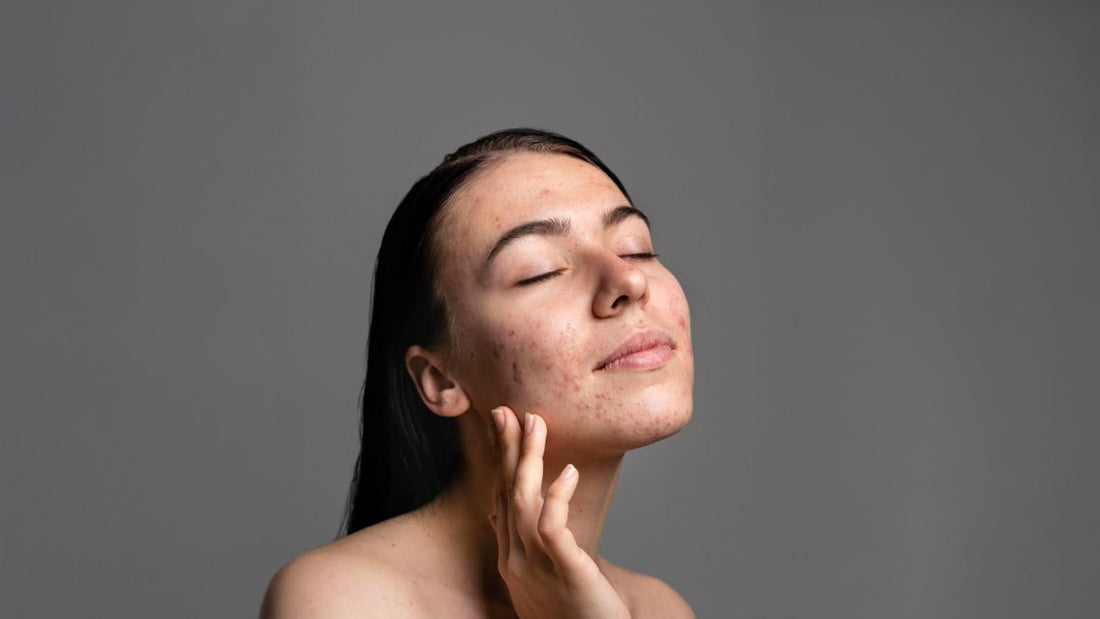What are Cosmeceuticals? Definitions and Legal Regulations
The FDA defines cosmetic products as "preparations, and the substances used to prepare them, that are applied to the body or any part of the body by pouring, sprinkling, rubbing, or applying in any other way, for the purpose of cleansing, beautifying, enhancing the attractiveness, or altering the appearance." Cosmeceuticals, on the other hand, are substances that may contain plants or plant extracts that affect physiological processes when applied to the skin [1]. They can be considered an intermediate between a drug and a cosmetic product.
When examining the legal regulations regarding cosmeceuticals, the FDA does not classify cosmeceutical products as drugs. These products can be manufactured and sold over the counter without any inspection, testing, or approval, provided their contents are stated on the label [2].
The German Commission E is a commission that reviews studies on plants and evaluates their safety and efficacy. Monographs published by this commission include information on whether cosmeceuticals have been approved, their use, indications, side effects, interactions with other drugs or cosmeceuticals, and use during pregnancy and lactation [3]. Another source, the EMEA (European Medicines Agency), has prepared monographs examining scientific studies on plants, assessing their safety and efficacy profiles. These monographs also contain information on cosmeceuticals, similar to Commission E [4].
 Prevalence and Reasons for Cosmeceutical Use During Pregnancy
Prevalence and Reasons for Cosmeceutical Use During Pregnancy
Today, the prevalence of cosmeceutical use during pregnancy is increasing. Pregnant and breastfeeding women prefer to use cosmeceutical products due to health problems such as chloasma, striae gravidarum, acne vulgaris, xerosis, palmar erythema, hirsutism, and postpartum telogen effluvium [5]. A study among 400 pregnant women found that 144 used cosmeceutical products, each averaging 1.7 products. They are more likely to choose cosmeceutical products they consider safe to manage dermatological problems encountered during pregnancy. However, it has been found that these cosmeceutical products are often used on the recommendation of friends or family, and there is a lack of information regarding their safety [6]. To address this lack of knowledge, patients should be informed by healthcare professionals, ensuring that they choose safe cosmeceutical products during pregnancy.
Pregnancy and breastfeeding are special periods in a woman's life, when the body undergoes numerous physiological changes and sensitivities become more pronounced. Therefore, the composition of the products used during these periods is of great importance. Therefore, the selection of cosmeceutical products is a matter of particular importance for both health and aesthetic reasons, both during pregnancy and breastfeeding.
Skin care during breastfeeding requires extra care, as it not only supports the mother's skin health but also considers the baby's. Furthermore, the safety of skin care products during pregnancy requires that the ingredients of the cosmeceuticals used during this period be healthy and reliable. Because cosmeceutical products offer therapeutic properties beyond skin care, improper use can lead to undesirable effects. In this article, we will address frequently asked questions about the safety and effectiveness of cosmeceuticals during pregnancy and breastfeeding.
Myths and Facts About Cosmeceuticals
There are common myths about cosmeceuticals, and this misinformation prevents pregnant and breastfeeding women from choosing safe and effective products. The most common of these myths is the belief that natural ingredients are always safe. Using a natural substance for many years doesn't necessarily mean it's safe for both mother and baby. Furthermore, products made from plants and plant extracts are not approved by the FDA. It's also important to consider the availability of products without a prescription. If a product causes harm to the user, it's considered unsafe.
 The “Natural Is Safe” Misconception and the Reality
The “Natural Is Safe” Misconception and the Reality
One of the myths surrounding cosmeceutical products is the misconception that "natural is safe." Many plants exist in nature, but some are quite poisonous. These harmful plants can have numerous side effects or even cause allergic reactions. While natural cosmetics may appear safe during pregnancy, it's important to remember that not every ingredient is harmless. It's important to choose products that have been proven to contain effective and safe ingredients [5], [7], [8].
Cosmeceuticals and Drug Interactions
Most people believe that using medications and cosmeceuticals together is harmless. Routine medications should not be used with herbs or plant extracts. These herbs and plant extracts can increase or decrease the absorption of the medication. This can lead to changes in the drug's blood concentration. Because cosmeceutical drug interactions, particularly when used with skin treatment products and systemic medications, can lead to undesirable side effects, it is crucial to seek support from a healthcare professional [5], [7].
Cosmeceuticals Used for Common Dermatological Problems During Pregnancy
During pregnancy, the mother undergoes several physiological and pathological changes to ensure normal fetal growth and development. Common physiological changes include linea nigra, fibroepithelial polyps, striae gravidarum, palmar erythema, and pruritis gravidarum. Pathological changes are known as pregnancy-specific dermatoses (PSDs). PCDs are classified based on skin characteristics, immunopathology, histopathology, and timing within pregnancy. PCDs are known as atopic eruption of pregnancy (AEP), polymorphic eruption of pregnancy (PEP), intrahepatic cholestasis of pregnancy (ICP), and pemphigoid gestationis (PG) [9].
Chloasma, striae gravidarum, and acne vulgaris are frequently observed among the dermatological problems encountered during pregnancy. Cosmeceutical products containing Vitis vinifera (Grape Seed) extract, Pinus pinaster (French Maritime Pine) extract, Centella asiatica (Gotu Kola) extract, cocoa butter, olive oil, Melaleuca alternifolia (Tea Tree Oil), tannin, and Vitex agnus castus (Chasteberry) extract are widely used in these physiological changes [5].
 Grape Seed and French Maritime Pine Extracts for the Treatment of Chloasma
Grape Seed and French Maritime Pine Extracts for the Treatment of Chloasma
Chloasma is a skin condition characterized by brown spots resulting from changes in skin pigmentation. Also known as the "pregnancy mask," chloasma is a condition affecting 50-70% of pregnant women [10]. Therefore, treatment for chloasma is crucial during pregnancy.
Grape seed extract is preferred topically during pregnancy due to its antioxidant, anti-inflammatory, and anticarcinogenic properties [11]. The use of grape seed extract, rich in proanthocyanidins, in the treatment of chloasma has been observed to reduce melanin biosynthesis and UV-induced hyperpigmentation [12]. Another study examined the effects of grape seed extract on 12 women with chloasma, and observed that oral administration of the extract successfully improved facial chloasma hyperpigmentation [13].
French Maritime Pine Extract is a standardized extract of Pinus pinaster bark containing proanthocyanidins, monomeric phenolic compounds, and phenolic acids. In vitro studies have shown it to be more potent than vitamin C and vitamin E. In a study of 30 women with chloasma, they were given tablets containing French Maritime Pine Extract for 30 days. Treatment was found to significantly reduce melasma [14].
Herbal Products Used for Striae Gravidarum and Their Effectiveness
Striae gravidarum, also known as pregnancy stretch marks, are seen in more than half of pregnant women [15]. Many women use herbal products such as Centella asiatica (Gotu Kola) extract, cocoa butter, and olive oil to prevent stretch marks. However, the effectiveness of these herbal products in the natural treatment of striae gravidarum is debatable because there is no treatment that can completely remove stretch marks once they have formed [5].
Centella asiatica (Gotu Kola) extract is used to improve wound and scarring. A study of 80 pregnant women (40 in the placebo group and 40 in the treatment group) applied a cream containing Centella asiatica extract. Striae gravidarum was observed in 22 women (56%) in the placebo group and 14 women (34%) in the treatment group. Clinical studies have shown that the cream containing Centella asiatica is effective [16].
In a study of 300 pregnant women to observe the effects of cocoa butter, 150 women received a placebo cream and 150 received cocoa butter cream. The women were followed until delivery to assess the development of striae gravidarum. It was found that 44% of patients using the cocoa butter cream developed striae gravidarum, compared to 55% of those using the placebo. Consequently, it can be concluded that cocoa butter cream does not prevent the development of striae gravidarum [17].
Another product used for Stravia gravidarum is olive oil. In a study of 100 pregnant women, 50 in the treatment group applied 1 cc of topical olive oil twice daily without massage. The control group received no cream or oil. No significant difference was observed between the two groups [18].
 Cosmeceuticals Used in the Treatment of Acne Vulgaris During Pregnancy
Cosmeceuticals Used in the Treatment of Acne Vulgaris During Pregnancy
Acne vulgaris affects women during pregnancy and breastfeeding. Acne can occur at various stages of pregnancy as a result of hormonal and physiological changes [19]. Melaleuca alternifolia (Tea Tree Oil), Vitex agnus castus (Chasteberry) extract, and tannin-containing plants are preferred as cosmeceuticals in the treatment of acne vulgaris during pregnancy due to their anti-inflammatory and antibacterial effects [5].
Melaleuca alternifolia (Tea Tree Oil) is an essential oil obtained by distilling the Melaleuca alternifolia plant. Thanks to its broad-spectrum antimicrobial activity, tea tree oil is effective against bacterial, viral, fungal, and protozoal infections affecting the skin and mucosa. Due to these effects, it is also said to be effective in acne vulgaris [20]. One study compared 5% benzoyl peroxide and 5% tea tree oil. Both improved acne in patients. The effect of tea tree oil was observed to be slower than that of benzoyl peroxide. Furthermore, fewer side effects were observed in the tea tree-treated group [21]. Another study found that 5% tea tree oil was an effective treatment for acne vulgaris [22].
Tannins are a substance found in many plants in nature. Plants that contain tannins include white oak bark (Quercus alba), English walnut leaves (Juglans regia), hernia (Agrimonia eupatoria), goldenrod (Solidago virgaurea), jambolan bark (Syzygium cuminum), Labrador tea (Ledum latifolium), honeysuckle (Alchemilla mollis), lavender (Lavandula angustifolia), mullein (Verbascum thapsus), ratania (Krameria triandra), Chinese rhubarb (Rheum palmatum) and St. John's wort (Hypericum perforatum). These plants are preferred in the treatment of acne vulgaris because of their astringent effect [23].
Vitex agnus castus (Chasteberry) extract is frequently used in the treatment of premenstrual symptoms. Commission E has established its systemic use at 40 mg/day for the treatment of premenstrual acne. However, systemic use of Vitex agnus castus is not recommended for the treatment of acne vulgaris during pregnancy and lactation, while topical use is permitted [5], [23].
There is insufficient scientific data regarding the use of products derived from plants and plant extracts during pregnancy and breastfeeding. Therefore, the selection of cosmeceutical products becomes an important consideration during pregnancy. Skin care products used during pregnancy should contain safe active ingredients. Furthermore, products with ingredients that negatively affect the skin barrier should be avoided. It is important to carefully examine skin care products used while breastfeeding for ingredients that may pass into breast milk. Products formulated with safe and effective ingredients that support the skin barrier of pregnant and breastfeeding women with sensitive skin, such as the Atopic Dermatitis Series, are safe for use during pregnancy and breastfeeding.
Source
1. Morganti, P., Morganti, G., Gagliardini, A., and Lohani, A. (2021). From cosmetics to innovative cosmeceuticals—non-woven tissues as new biodegradable carriers. Cosmetics, 8(3), 65.
2. Bedi, M.K., and Shenefelt, PD (2002). Herbal therapy in dermatology. Archives of dermatology, 138(2), 232-242.
3. Blumenthal, M. (1999). The complete German commission E monographs. Therapeutic guide to herbal medicines.
4. Herbal medicinal products. European Medicines Agency; 2025 www.ema.europa.eu/en/human-regulatory-overview/herbal-medicinal-products
5. Yildiz, H., and Abuaf, Ö. K. (2013). Use of cosmeceuticals during pregnancy and lactation period. Turkderm: Turkish Archives of Dermatology and Venereology, 47(4), 194.
6. Nordeng, H., and Havnen, G. C. (2004). Use of herbal drugs in pregnancy: a survey among 400 Norwegian women. Pharmacoepidemiology and drug safety, 13(6), 371-380.
7. Friedman, J. M. (2000). Teratology society: presentation to the FDA public meeting on safety issues associated with the use of dietary supplements during pregnancy. Teratology, 62(2), 134-137.
8. Wal, A., Wal, P., Gupta, S., Sharma, G., and Rai, AK (2011). Pharmacovigilance of herbal products in India. Journal of Young Pharmacists, 3(3), 256-258.
9. Beard, M. P., and Millington, G. W. M. (2012). Recent developments in the specific dermatoses of pregnancy. Clinical and experimental dermatology, 37(1), 1-5.
10. Kalaycı, MM (2020). Pregnancy Mask: Melasma. Journal of Experimental and Basic Medical Sciences, 1(2), 065-067.
11. Draelos, Z.D. (Ed.). (2021). Cosmetic dermatology: products and procedures. John Wiley & Sons.
12. Yamakoshi, J., Otsuka, F., Sano, A., Tokutake, S., Saito, M., Kikuchi, M., and Kubota, Y. (2003). Lightening effect on ultraviolet-induced pigmentation of guinea pig skin by oral administration of a proanthocyanidin-rich extract from grape seeds. Pigment cell research, 16(6), 629-638.
13. Yamakoshi, J., Sano, A., Tokutake, S., Saito, M., Kikuchi, M., Kubota, Y., ... and Otsuka, F. (2004). Oral intake of proanthocyanidin‐rich extract from grape seeds improves chloasma. Phytotherapy Research: An International Journal Devoted to Pharmacological and Toxicological Evaluation of Natural Product Derivatives, 18(11), 895-899.
14. Ni, Z., Mu, Y., and Gulati, O. (2002). Treatment of melasma with Pycnogenol®. Phytotherapy Research: An International Journal Devoted to Pharmacological and Toxicological Evaluation of Natural Product Derivatives, 16(6), 567-571.
15. Young, G.L., and Jewell, D. (2000). Creams for preventing stretch marks in pregnancy. Cochrane Database Syst Rev, 2, CD000066.
16. Mallol, J., Belda, M.A., Costa, D., Noval, A., and Sola, M. (1991). Prophylaxis of Striae gravidarum with a topical formulation. A double blind trial. International journal of cosmetic science, 13(1), 51-57.
17. Buchanan, K., Fletcher, H. M., and Reid, M. (2010). Prevention of striae gravidarum with cocoa butter cream. International Journal of Gynecology & Obstetrics, 108(1), 65-68.
18. Soltanipoor, F., Delaram, M., Taavoni, S., and Haghani, H. (2012). The effect of olive oil on prevention of striae gravidarum: a randomized controlled clinical trial. Complementary Therapies in Medicine, 20(5), 263-266.
19. Ly, S., Kamal, K., Manjaly, P., Barbieri, J.S., and Mostaghimi, A. (2023). Treatment of acne vulgaris during pregnancy and lactation: a narrative review. Dermatology and Therapy, 13(1), 115-130.
20. Pazyar, N., Yaghoobi, R., Bagherani, N., and Kazerouni, A. (2013). A review of applications of tea tree oil in dermatology. International journal of dermatology, 52(7), 784-790.
21. Bassett, IB, Barnetson, RSC, and Pannowitz, D.L. (1990). A comparative study of tea‐tree oil versus benzoylperoxide in the treatment of acne. Medical Journal of Australia, 153(8), 455-458.
22. Enshaieh, S., and Jooya, A. (2007). The efficacy of 5% topical tea tree oil gel in mild to moderate acne vulgaris: a randomized, double-blind placebo-controlled study.
23. Reuter, J., Merfort, I., and Schempp, C. M. (2010). Botanicals in dermatology: an evidence-based review. American journal of clinical dermatology, 11, 247-267.





